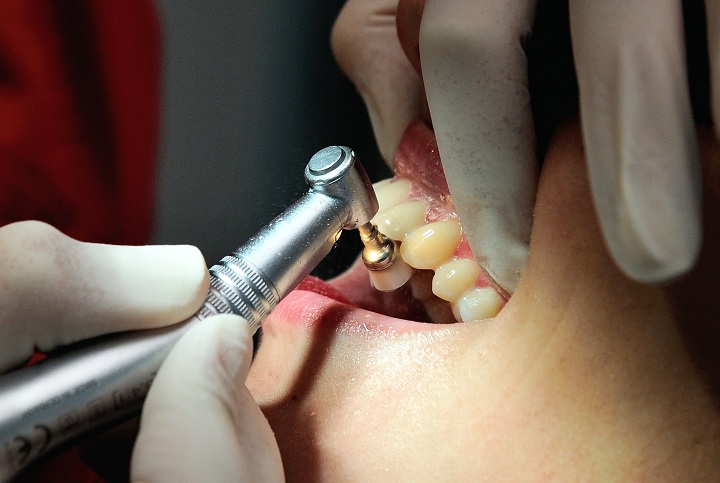In light of the recent arrest of the unlicensed Burnaby dentist Tung Sheng (David) Wu earlier this month, a vigorous debate was sparked around the cost of dental work and how much of a barrier there is to getting proper care.

“There’s a big social question out there around dentistry and why it isn’t part of the public health system,” says Jerome Marburg, Registrar and CEO of the College of Dental Surgeons of B.C. “There is a portion of the population for which cost is a hurdle.”
How high that hurdle goes, is something that still needs to be determined. Research conducted by the Canadian Association of Public Health Dentistry, suggests that 20 to 25 per cent of Canadians, which translates roughly to 1 in 5 Canadians or 8 million people, reported a barrier to going to the dentist due to financial costs. This can be seen as a lack of access to dentists due to cost or not getting all the treatment needed due to monetary constraints.
In Marburg’s experience there is a host of barriers people face that would potentially drive people to an illegal or underground dentist. He says for some it’s cost, while others may not know they can go to a low-cost clinic or in some cases, the care may not be available immediately. It’s important to note that while the CDSBC is concerned about barriers like cost and accessibility, their focus as a regulatory board is to ensure the protection of the public through ensuring safe and appropriate dental care for people in B.C.
While to some, cost may not be a single factor in people seeking cheaper dental options, there are gaps in the system, especially for those not covered by private dental insurance. The Canadian Health Measures Survey, which measured oral health in Canada showed that 62 per cent of Canadians have private dental insurance, while 32 per cent of the country’s population had no dental insurance.
Along with low income people, in a lot of cases it’s kids and seniors that fall through the cracks of the system; which begs the question – what are the options for affordable safe dentistry?
In addition to clinics, the province also has a Healthy Kids Program for families on income assistance with children 18 and under.
Stephen Learey, the executive director of the Strathcona Community Dental Clinic in Vancouver, says overall the program is “fairly good, if you use it on a regular basis.” The program allocates each child $1,400 every two years for dental expenses. Currently, Marburg says there are approximately 140,000 income assistance recipients.
Running for 11 years, Learey’s clinic is the only one to focus on lower income families and their kids, along with people 65 years and older, who live in the communities of the Downtown Eastside (DTES) and Strathcona. While the Healthy Kids program helps, they often see kids who are visiting the dentist for the first time and need more work done then the plan can cover.
“We find there are cultural barriers but also problems with new parents because there’s not a lot of talk around oral health,” Learey explains. “There’s lots of talk around nutrition and breastfeeding but we still get lots of parents who come in when their kids are three years old and they already have a lot of tooth decay.”
Those costs can quickly add up. For a child with multiple teeth containing decay the cost can get into the thousands of dollars.
About 60 per cent of the Strathcona clinic’s practice is made up of children on the Health Kids Program. The clinic continues to survive by cutting corners where they can – they pay their dentists less and they rely on equipment and financial donations as well as partnering with the BC Dental Association. Overall, providing care to so many kids comes down to teamwork. As Learey says, “it takes a whole team of people to solve a problem.”
Why aren’t more dentists taking on low income kids and their families? Learey chalks it up to the kids program having a funding formula that many dentists feel is not enough for the work they do. In essence, the dentists can’t afford to do the Healthy Kids Program or if they can, they can’t do many.
“If they do take them, they’ll end up charging them an extra amount, which defeats the purpose with a low-income family,” Learey says. “Or they’ll only take on a certain number of patients on the program, for example, maybe 10 patients or families.”
There’s no denying dentistry is expensive – from the equipment, to infection control and health standards, to the supplies, and staff. Ironically, there are no shortages of dentists in Canada, to the point where dentistry does not fast-track you in the immigration process anymore. But having a bevy of dentists doesn’t solve another potential barrier – the issue of accessibility.
It’s potential barriers like these that sometimes drive people to illegal dentists. Something Marburg cautions people about because in his experience, “not one of the illegal practitioners we’ve dealt with are in it for the good of the patient.”
They’re profiteering, they don’t do x-rays, they don’t do infection control, they don’t keep records and they put their patients at elevated risks.”
Overall, it comes down to a matter of public health. There are options for people without dental insurance, Marburg says, from low-cost and volunteer clinics, to subsidized programs or to talking to your dentist to negotiate a way to pay for your care whether it’s at a reduced cost or on a payment schedule.
For more information on reduced cost clinics in B.C. – http://www.bcdental.org/Find_a_Dentist/ReducedCostClinics.aspx




Comments